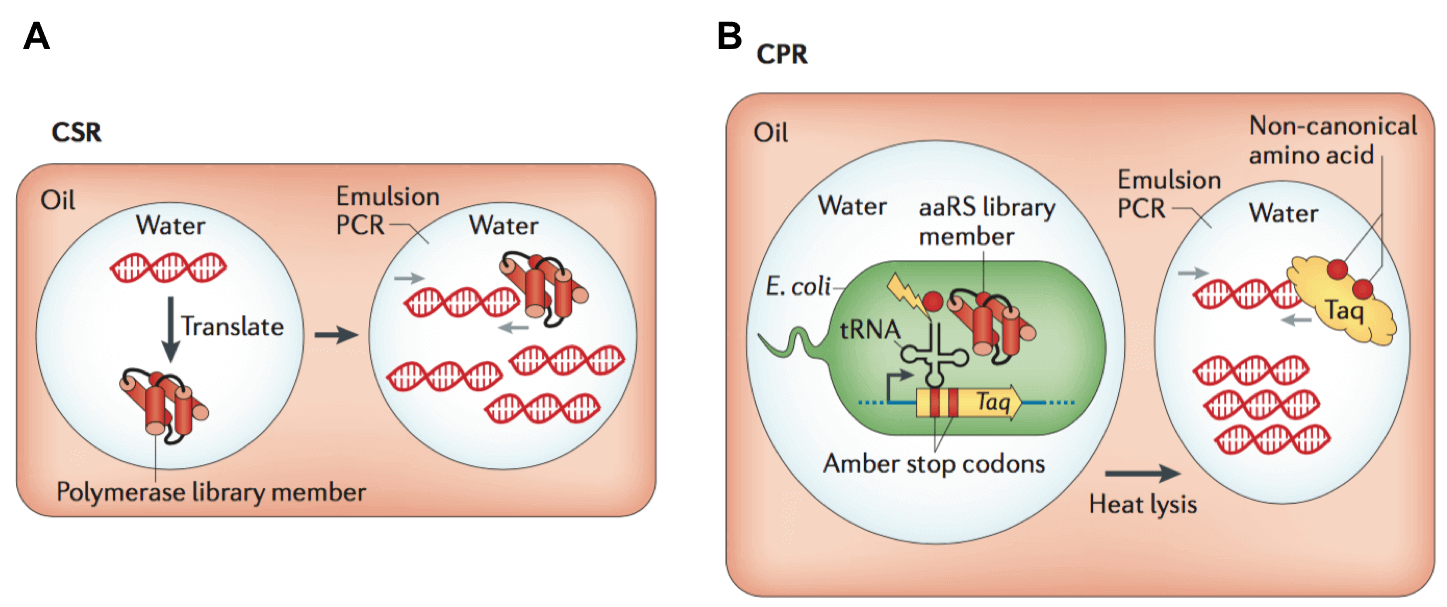Selection with in vitro Compartments
Creative Biostructure is highly-experienced and knowledgeable in offering first-class selection with in vitro compartments for protein engineering. Our scientists can generate enzymes with a wide range of kinetic and physical properties based on best protein evolution and engineering platform.
In vitro selection uses much the same principles for molecular evolution as does in vivo selection, is an innovative technique that can bypass the limitations of in vivo selection, such as transformation efficiency bottlenecks and host genome mutations that unexpectedly affect selection survival. Creative Biostructure can perform an outstanding approach termed in vitro compartment to couple genes and gene products without using cells, which is the translation of library members in the aqueous droplets of water–oil emulsions. Most notably, selection within in vitro compartments are well suited for enzymes that directly act on DNA substrates.

Figure 1. In vitro Selection methods for directed evolution. (Nature Reviews Genetics, 2015)
Creative Biostructure can provide different selection strategies for directed evolution. In vitro selection for DNA and RNA polymerases in emulsions are also termed compartmentalized self-replication (CSR) due to the polymerases that can most efficiently replicate their encoding gene in an emulsion PCR are enriched post-selection. It is reported that CSR is applied for selecting DNA polymerases that more efficiently amplify damaged DNA isolated from extinct organisms. Another method, compartmentalized partnered replication (CPR), extends IVC selection beyond enzymes that act on DNA. Within CPR selection, the evolving enzyme can control expression of Taq polymerase. Higher concentrations of Taq lead to better PCR amplification of active genes within emulsion droplets containing single E. coli cells. For instance, CPR can evolve T7 RNA polymerase variants with orthogonal promoter preferences. This evident demonstrates that the power of CPR has evolved enzymes that do not act on DNA substrates.
In vitro compartments selection (emulsion-based) has several advantages, including:
- Allowing selection for multiple turnover reactions;
- Avoiding the demand for cells, toxic substrates or unnatural substrates can be used in selection;
- Providing much greater control over the selection process;
- Sieving larger library sizes.
Creative Biostructure’s custom screening or selection services can provide you a wide range of first-class strategies for directed evolution. Creative Biostructure also provides Membrane Protein Platform and Phage Display Platform for your specific projects. Please feel free to contact us for a detailed quote.
References:
M. S. Packer and D. R. Liu (2015). Methods for the directed evolution of proteins. Nature Reviews Genetics, 16: 379-394.
W. C. Lua and A. D. Ellington (2013). In vitro selection of proteins via emulsion compartments. Methods, 60(1): 75-80.